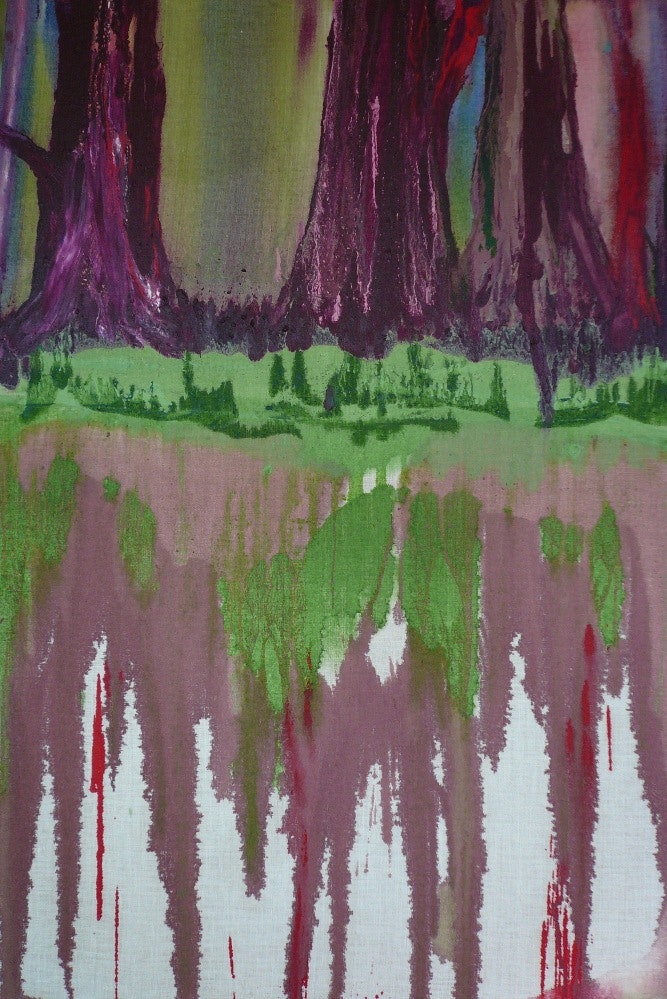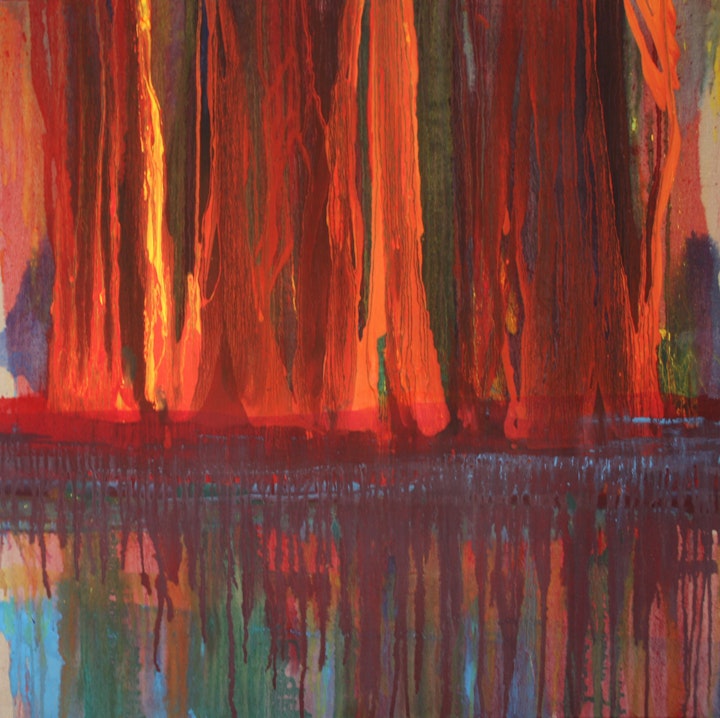
Ruth Hamill, Roots, 2009. oil on raw linen, 34x22 inches

Ruth Hamill, Fall Reflect, 2011, oil on linen, 36x36 inches

Ruth Hamill, Reflect I, 2010, oil on raw linen, 18x18 inches

Ruth Hamill, Reflect II, 2010, oil on raw linen, 18x18 inches

Ruth Hamill, Lily Pond, 2011, oil on linen, 34x22 inches
I began this body of work during a particularly stunning New England Fall. The colors, constantly changing not only with each day's light from morning to sunset but also as the foliage progressed toward winter, were breathtaking. So I spent a lot of time in the forests near my home in Massachusetts and in New Hampshire, Vermont and Maine. One day presented more visual resource material for painting than the previous. I started with traditional oil painting, at an easel, and experimented with watercolor. Often I was most drawn to the forest reflected in a pond.
Even as a kid, Fall was my favorite time, for its colors and probably for the start of school. And Fall is so much longer and richer in New England than in the Midwest where I grew up. What lasts a week there goes on for a month here.
Just as I thought I was finished with this Autumn work, I began a residency at the Vermont Studio Center. It was full-on winter. At the Vermont Studio Center, with the time, space and freedom to develop new work, I soon found that the reflected trees I had spent so much time seeing and then painting traditionally began taking form in my non-traditional paintings, transformed by the technique I had been experimenting with and using that involved diluting oil paints and pouring on unprimed canvas.